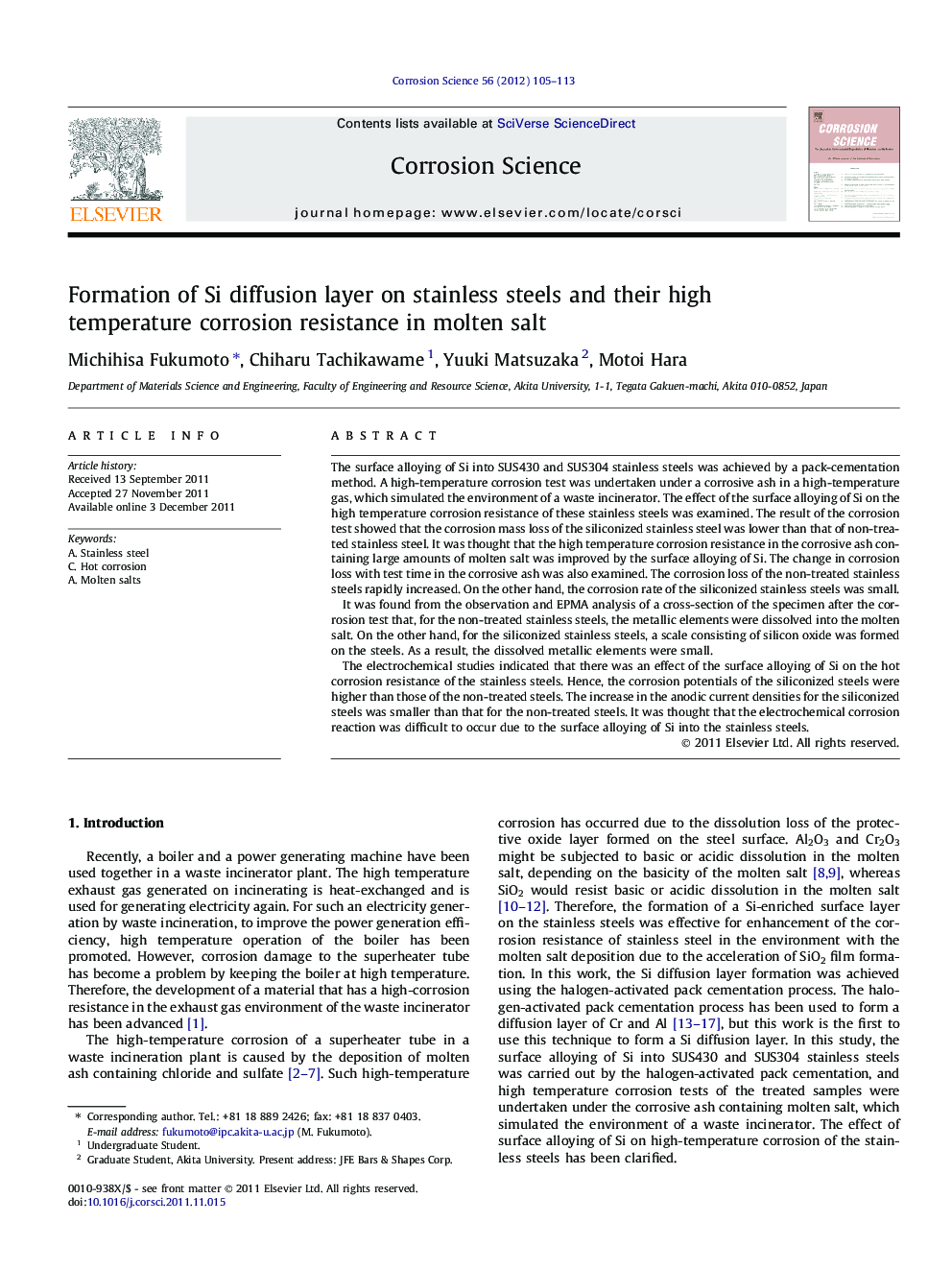| کد مقاله | کد نشریه | سال انتشار | مقاله انگلیسی | نسخه تمام متن |
|---|---|---|---|---|
| 1469878 | 1510039 | 2012 | 9 صفحه PDF | دانلود رایگان |

The surface alloying of Si into SUS430 and SUS304 stainless steels was achieved by a pack-cementation method. A high-temperature corrosion test was undertaken under a corrosive ash in a high-temperature gas, which simulated the environment of a waste incinerator. The effect of the surface alloying of Si on the high temperature corrosion resistance of these stainless steels was examined. The result of the corrosion test showed that the corrosion mass loss of the siliconized stainless steel was lower than that of non-treated stainless steel. It was thought that the high temperature corrosion resistance in the corrosive ash containing large amounts of molten salt was improved by the surface alloying of Si. The change in corrosion loss with test time in the corrosive ash was also examined. The corrosion loss of the non-treated stainless steels rapidly increased. On the other hand, the corrosion rate of the siliconized stainless steels was small.It was found from the observation and EPMA analysis of a cross-section of the specimen after the corrosion test that, for the non-treated stainless steels, the metallic elements were dissolved into the molten salt. On the other hand, for the siliconized stainless steels, a scale consisting of silicon oxide was formed on the steels. As a result, the dissolved metallic elements were small.The electrochemical studies indicated that there was an effect of the surface alloying of Si on the hot corrosion resistance of the stainless steels. Hence, the corrosion potentials of the siliconized steels were higher than those of the non-treated steels. The increase in the anodic current densities for the siliconized steels was smaller than that for the non-treated steels. It was thought that the electrochemical corrosion reaction was difficult to occur due to the surface alloying of Si into the stainless steels.
► The surface alloying of Si into the stainless steels was achieved by a pack-cementation method.
► A high-temperature corrosion test was undertaken under a corrosive ash in a high-temperature gas.
► The hot corrosion resistance of the stainless steels was improved by the surface alloying of Si.
Journal: Corrosion Science - Volume 56, March 2012, Pages 105–113